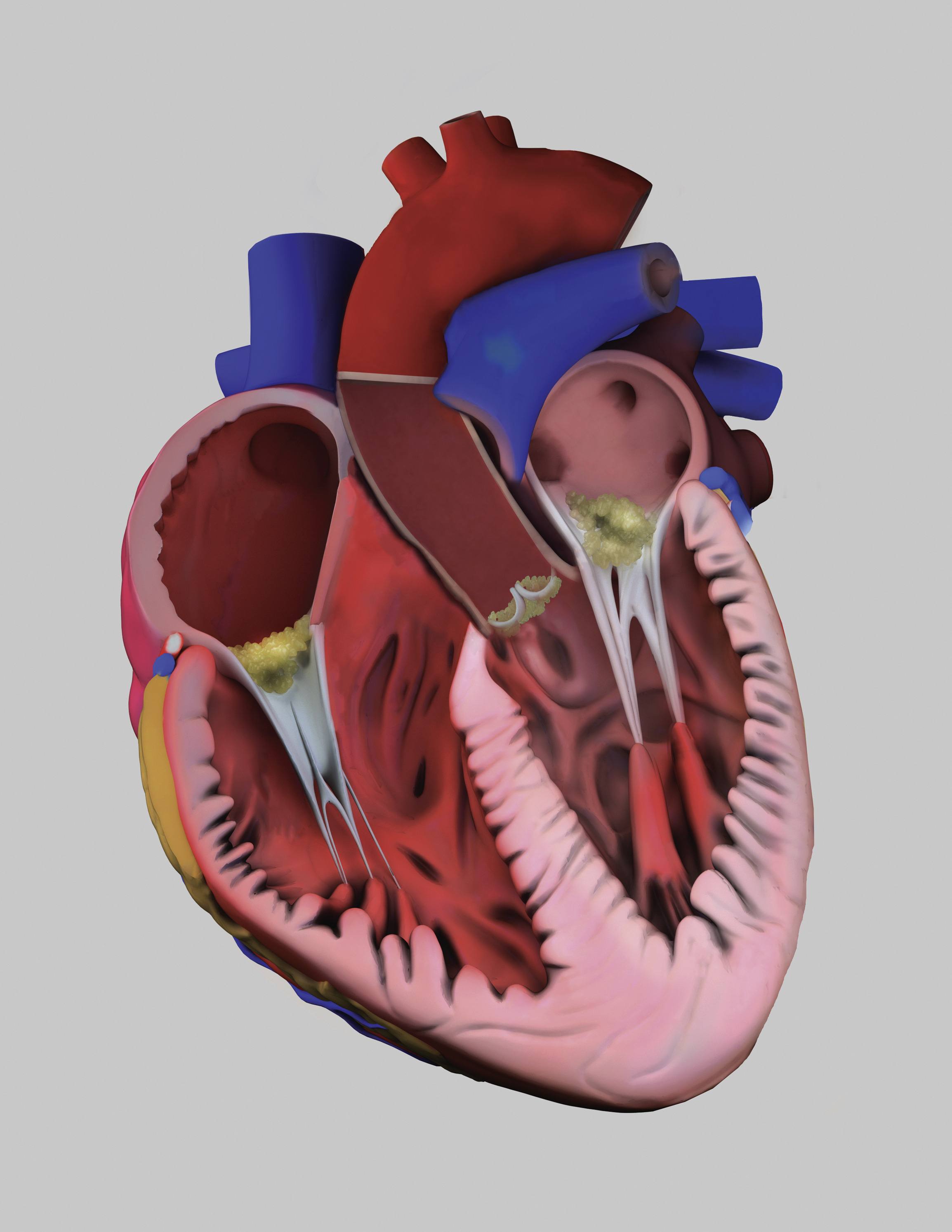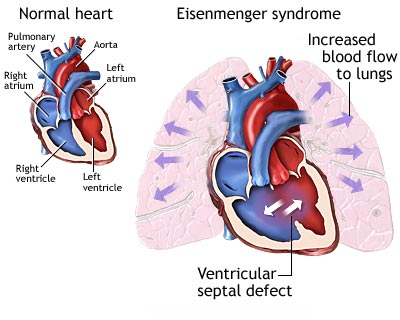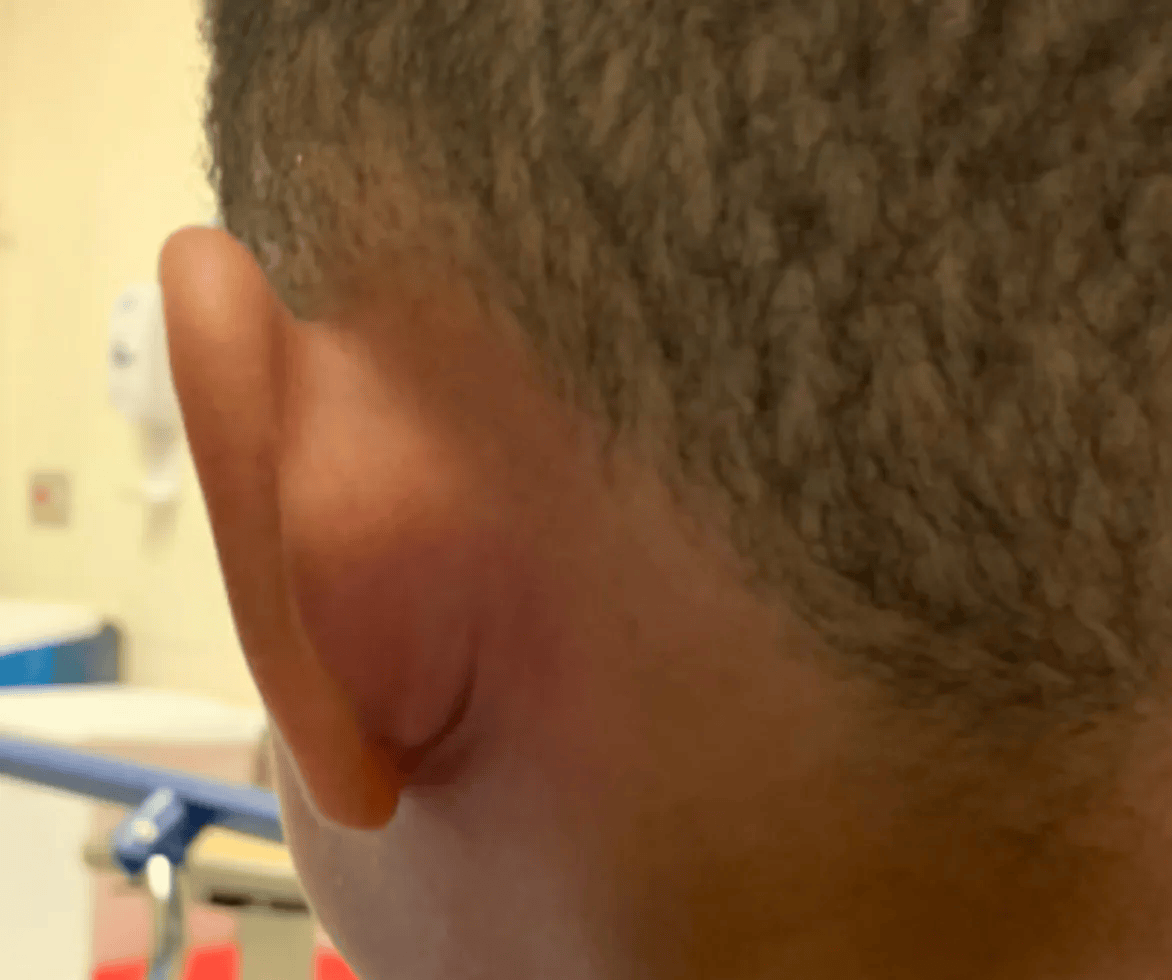Most Missed FM Exam Question This Week — Staphylococcus Skin Infection
Staphylococcus species. Misses commonly come from confusing S. aureus with coagulase‑negative staphylococci; focus on distinguishing features and board‑style clues in the stem.
A 53-year-old man presents with fever, mental confusion, and lethargy for 1 week. He denies any cough, chest pain, or abdominal pain. He has a recent history notable for tissue aortic valve replacement (2 months ago). The patient’s vital signs are: pulse 92 beats/minute; blood pressure 120/70 mm Hg; respiratory rate 16 breaths/minute; and temperature 39°C (102.2 °F). On examination, he has a systolic murmur along the right sternal border and cutaneous manifestations on his foot (see Figure).

Figure.
You suspect infective endocarditis (IE) based on the patient’s fever and cardiac predisposition (recent prosthetic valve). Given the emergence of new risk factors in health care, the organism most important to cover is which of the following?
Answer Options:
- oral streptococci
- enterococci
- Staphylococcus species
- fungi/yeasts
The correct answer is 3 - Staphylococcus species.
This question has a 25% miss rate, with the most common miss being #2 - enterococci.
This question is not as straightforward as it seems at first. If the test question includes a timeline clue like this one, make note of it. Timelines often change the entire focus of the question. So it’s a tricky question, not as obvious as it might first appear.
Why This Question Is Often Missed
- Valve Timing Confusion: Students may default to native‑valve pathogens (e.g., oral streptococci) without applying the ≤60‑day “early” cutoff for prosthetic infections.
- Embolic Lesion Misdirection: Janeway lesions can suggest subacute presentations, leading learners away from the acute, staphylococcal pattern.
What the Distractors Indicate
| Option | What It Tests / Implies | Why It’s Wrong Here |
|---|---|---|
| A. Oral streptococci |
Subacute, native‑valve IE often due to viridans strep | Early prosthetic IE is dominated by staphylococci, not strep |
| B. Enterococci | GU/GI‑associated IE; late or native patterns |
Uncommon in the first 60 days post‑replacement |
| C. Staphylococcus species |
Acute, aggressive pathogens on prosthetic material | Correct: most frequent in early prosthetic‑valve IE |
| D. Fungi / yeasts | Rare, especially in immunocompromised or very late cases | Very low yield <60 days, more often in late or immuno‑suppressed |
High‑Yield Pearl
In early prosthetic‑valve endocarditis (≤60 days post‑implant), Staphylococcus aureus and coagulase‑negative staphylococci cause ≥70% of cases—far outpacing streptococci or enterococci.
Core Learning Objectives
- Classify prosthetic‑valve IE by timing (early ≤60 days vs. late >60 days) and link each period to its predominant pathogens.
- Recall that Staphylococcus aureus and coagulase‑negative staphylococci are the leading causes of early prosthetic‑valve endocarditis.
The “Test Trick” at Play
The question embeds a timeline clue (“2 months post‑replacement”) plus a prosthetic valve context to steer you toward early IE—where staphylococci reign. Examinees who skim “prosthetic valve” often misapply native‑valve rules or focus on subacute signs (e.g., Janeway lesions) and miss the acute‑staph cue.
Additional Family Medicine Practice Questions and Remediation
FM Prep Practice Question 1
A 72‑year‑old with bioprosthetic mitral valve replacement 4 weeks ago presents with fevers, chills, and night sweats. Blood cultures grow Gram‑positive cocci in clusters. Which organism is most likely?
A. Viridans streptococci
B. Enterococcus faecalis
C. Coagulase‑negative staphylococci
D. Candida albicans
Answer and Remediation
Remediation
- If you chose C: Correct response! Early prosthetic‑valve IE most often involves coagulase‑negative staphylococci.
- If you chose A, B, or D: Review:
- A is typical of native, subacute IE.
- B appears in late (>60 days) prosthetic or GU procedures.
- D is rare and usually very late or in immunocompromised hosts.
FM Prep Practice Question 2
A 60‑year‑old man 3 months after aortic valve replacement develops low‑grade fevers and fatigue over 4 weeks. Echocardiography shows vegetations. Blood cultures yield Enterococcus faecalis. Which statement is true?
A. This is classic early prosthetic‑valve IE.
B. This represents late prosthetic‑valve IE mimicking native patterns.
C. Empiric therapy should only cover staphylococci.
D. Oral streptococci remain the top concern.
Answer and Remediation
Remediation
- If you chose B: Correct response! After 60 days, prosthetic‑valve infections follow native‑valve pathogen patterns (enterococci, streptococci).
- If you chose A, C, or D: Review:
- A is false—enterococci rarely cause early IE.
- C is wrong—late IE requires broader coverage.
- D misprioritizes oral strep over enterococci in late disease.
FM Prep Practice Question 3
A 65‑year‑old with mechanical tricuspid valve replacement 8 weeks ago presents with acute onset high fevers and sepsis. Which empiric coverage is most critical?
A. Penicillin for viridans streptococci
B. Ampicillin for enterococci
C. Vancomycin targeting staphylococci
D. Amphotericin for fungal IE
Answer and Remediation
Remediation
- If you chose C: Correct response! Early prosthetic IE demands staphylococcal coverage, including MRSA.
- If you chose A, B, or D: Review:
- A/B omit staph, risking untreated S. aureus or coagulase‑negative strains.
- D is reserved for proven fungal infection and very late cases.
Group Discussion Prompt
Discussion: In a patient with a mechanical versus a tissue prosthetic valve, how would your diagnostic approach, choice of imaging, and empiric antibiotic regimen differ for suspected endocarditis at 4 weeks versus 6 months post‑implant?




